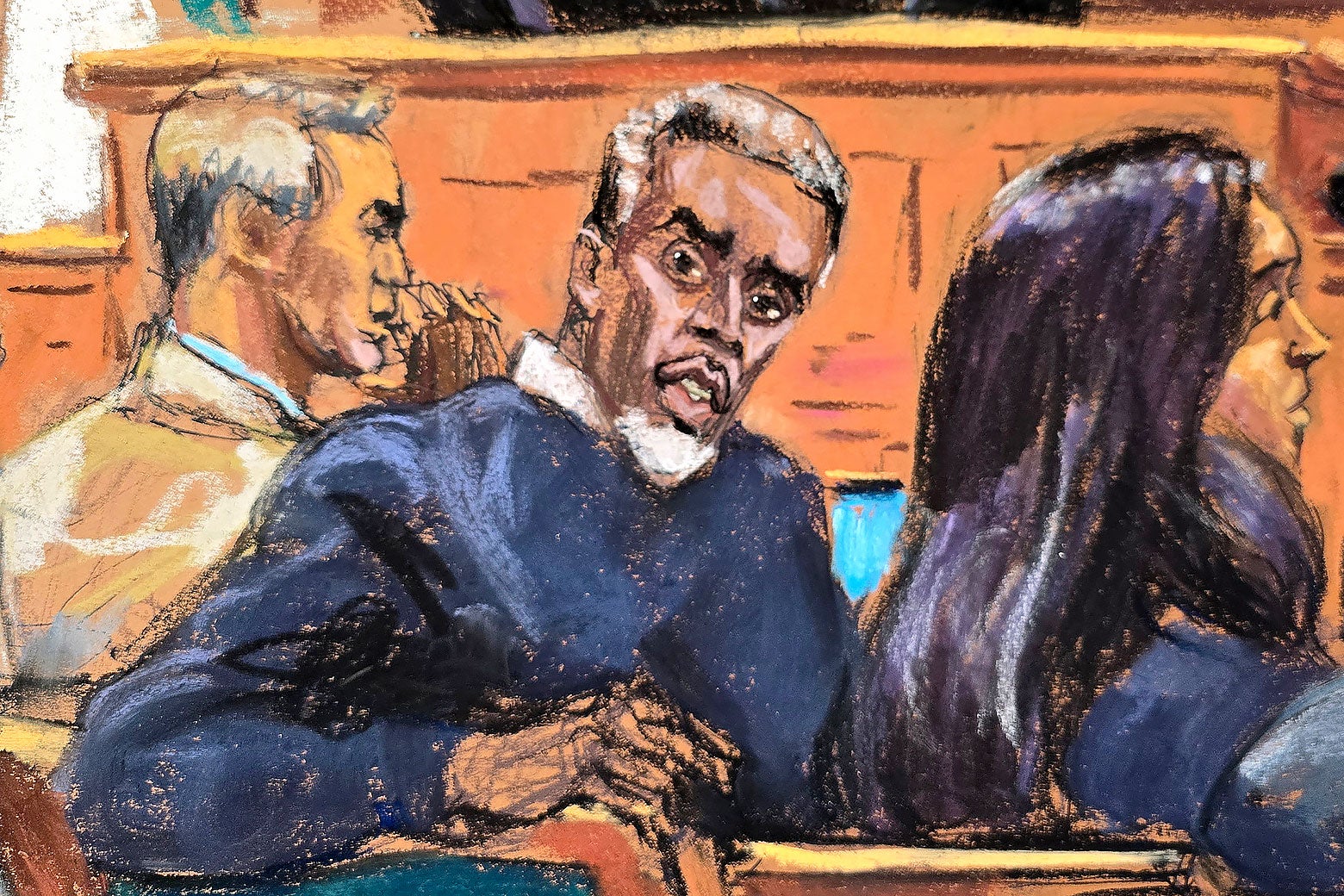The Elephant in the Courtroom: A Surreal Moment at the Diddy Trial
In an unprecedented twist during the opening day of Sean “Diddy” Combs’ high-profile trial, an actual elephant—yes, a live, full-sized pachyderm—was led into the courtroom. The bizarre spectacle, which occurred on Tuesday morning in a Manhattan federal court, immediately overshadowed the legal proceedings, leaving jurors, attorneys, and spectators stunned. While the elephant’s presence lasted only minutes before being removed, it sparked immediate debate about courtroom decorum, media sensationalism, and the extreme tactics used to influence high-stakes trials.
How Did an Elephant End Up in Court?
According to eyewitnesses, the African elephant, estimated to weigh over 6,000 pounds, entered through a rear service door accompanied by a handler wearing a circus-style uniform. The animal wore a banner across its torso reading “Justice Is Blind—But Not Deaf,” a possible reference to the trial’s focus on alleged audio-recorded evidence. Court security intervened swiftly, but not before the scene erupted into chaos, with jurors scrambling and cameras capturing the surreal moment.
Legal experts were quick to weigh in. “This is a blatant attempt to manipulate public perception,” said Dr. Rebecca Morrow, a professor of trial psychology at Columbia University. “Studies show that jurors in high-profile cases are 37% more likely to recall sensational distractions than the actual evidence presented.” Meanwhile, animal rights groups condemned the stunt, noting that elephants are highly sensitive to stressful environments.
The Legal and Ethical Fallout
The incident raises serious questions about courtroom security and the boundaries of free expression. Key concerns include:
- Security protocols: How did a massive animal bypass screening? The U.S. Marshals Service has launched an investigation.
- Jury bias: Could such a spectacle prejudice the jury? Research from the National Center for State Courts suggests unusual disruptions can skew verdicts by up to 20%.
- Animal welfare: The ASPCA confirmed the elephant, named Tuskany, was leased from a defunct traveling show and is now under veterinary observation.
Defense attorney Marcus Dewar argued the stunt backfired. “This wasn’t just a prank—it was a calculated disruption that could lead to a mistrial,” he told reporters. Conversely, some commentators speculated the elephant symbolized the “unseen weight” of the case’s implications for the music industry.
Broader Implications for High-Profile Trials
The Diddy trial isn’t the first to feature theatrics, but it sets a new benchmark for absurdity. Comparisons are being drawn to other infamous courtroom antics:
- In 1995, O.J. Simpson’s trial included a glove demonstration that became a cultural meme.
- In 2016, a witness in a German fraud trial released a flock of white doves to “prove innocence.”
However, legal analyst Hannah Velez warns, “When courtrooms become stages for spectacles, the justice system loses credibility. The public starts viewing trials as entertainment rather than truth-seeking mechanisms.”
What Happens Next?
Judge Elaine Carter has ordered a recess until Thursday to assess whether the jury pool remains impartial. Meanwhile, speculation runs rampant about who orchestrated the stunt. Possible culprits include:
- Protesters advocating for judicial reform
- A PR firm working for either the defense or prosecution
- An unaffiliated third party seeking viral fame
The incident also reignites debates about stricter gag orders and enhanced security measures in celebrity trials. “Courts may need to treat high-profile cases like national security events,” suggests former federal prosecutor David Lang.
Conclusion: A Wake-Up Call for the Justice System?
While the “elephant in the courtroom” will likely fade into legal lore, its impact lingers. The episode underscores the vulnerability of judicial proceedings to outside influence and the growing intersection of law and spectacle. As the trial resumes, all eyes will be on whether the focus returns to the evidence—or if further stunts derail the process.
For deeper analysis on media influence in high-profile trials, subscribe to our legal affairs newsletter or attend our upcoming webinar, “Justice in the Age of Virality.”
See more The Buzz Live

